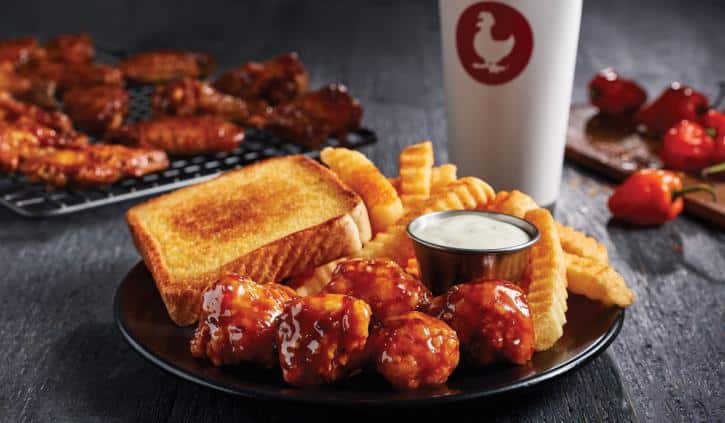
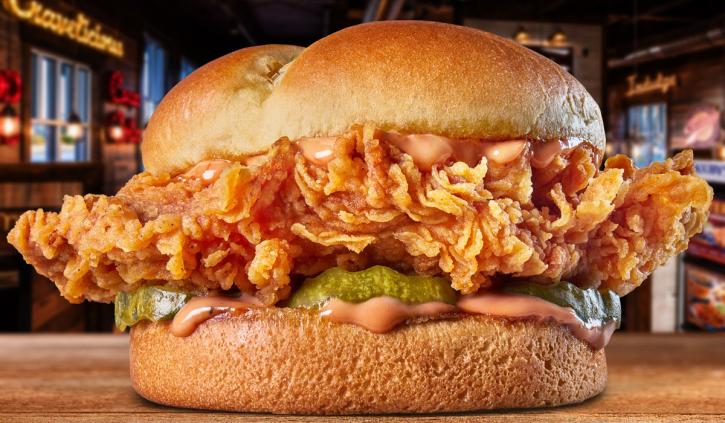
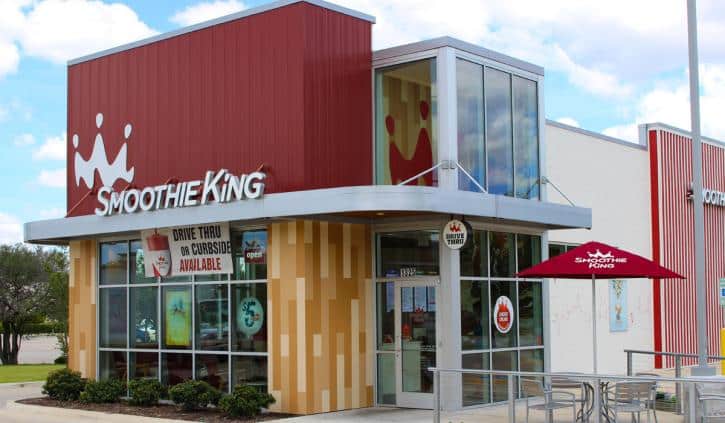
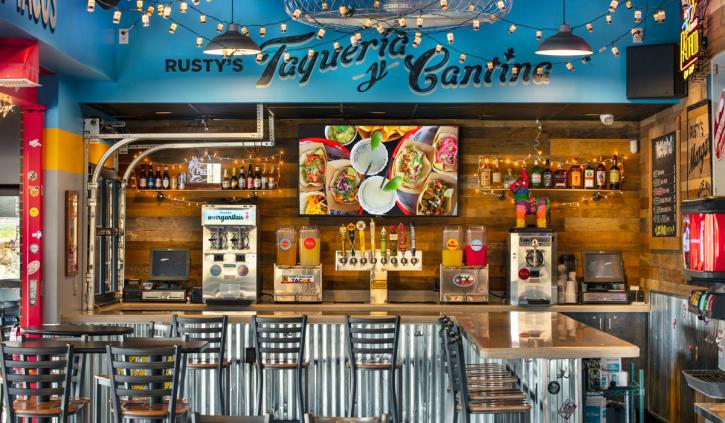
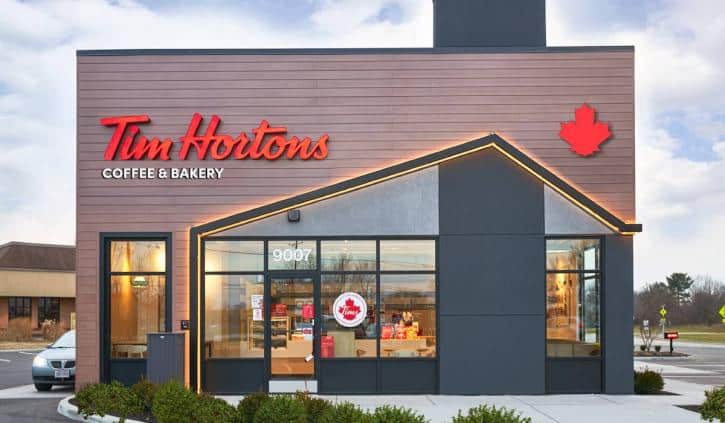
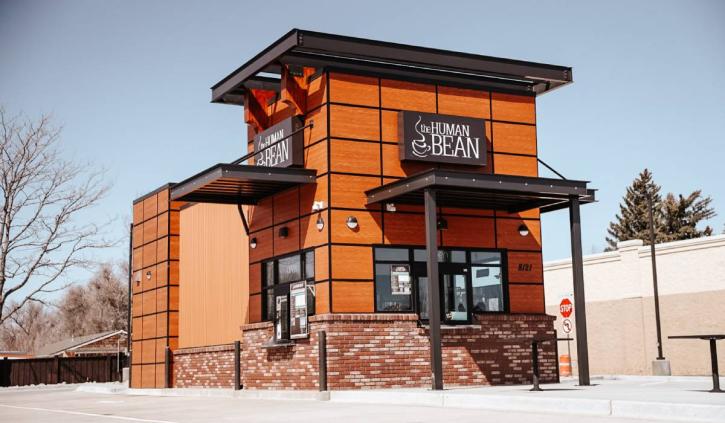
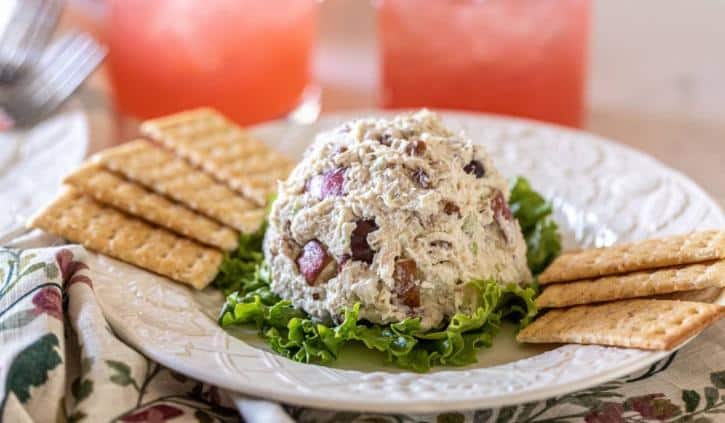
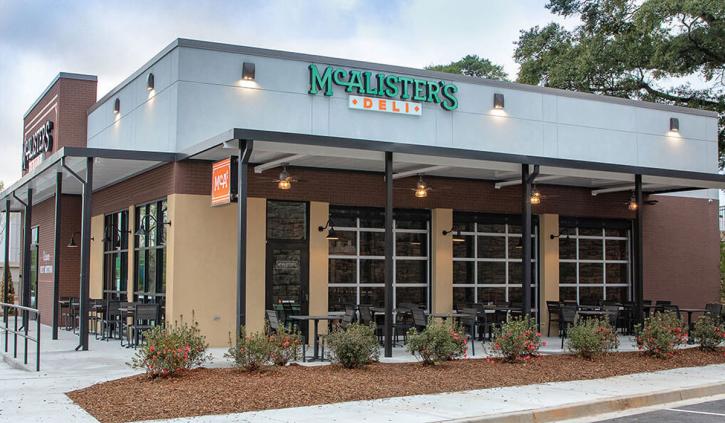
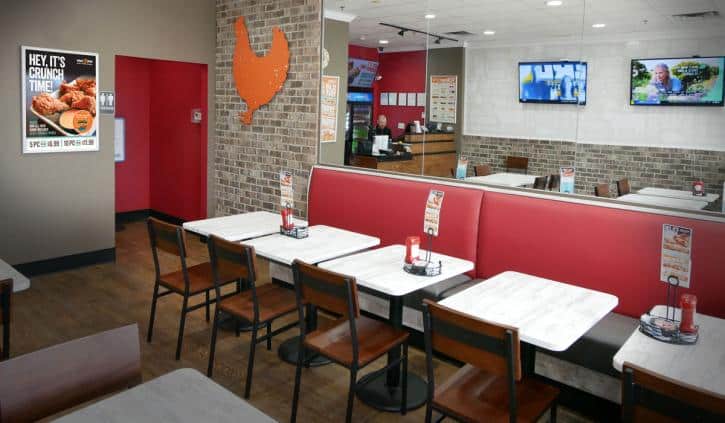
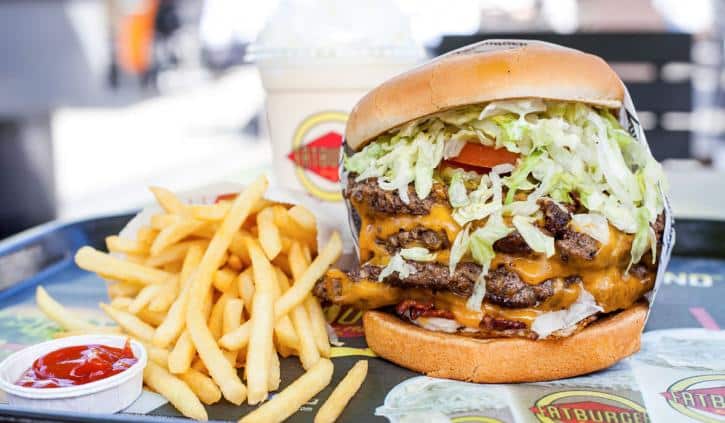
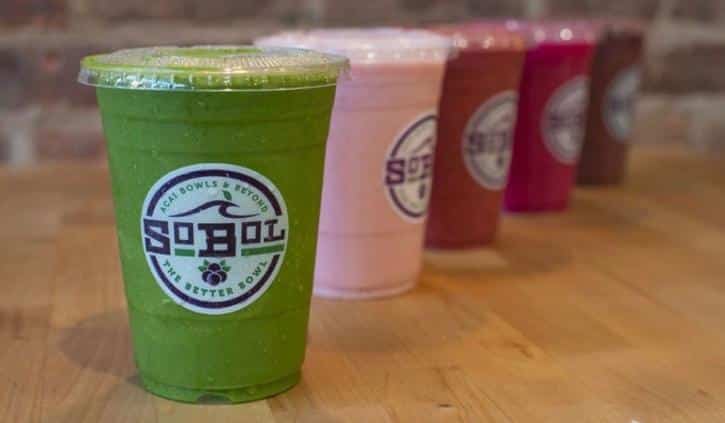
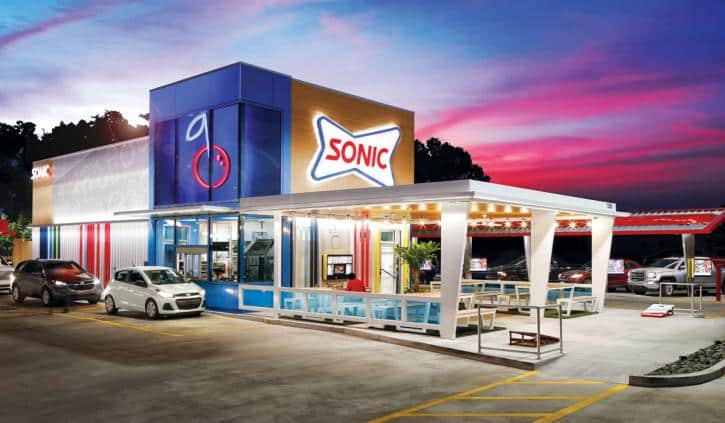
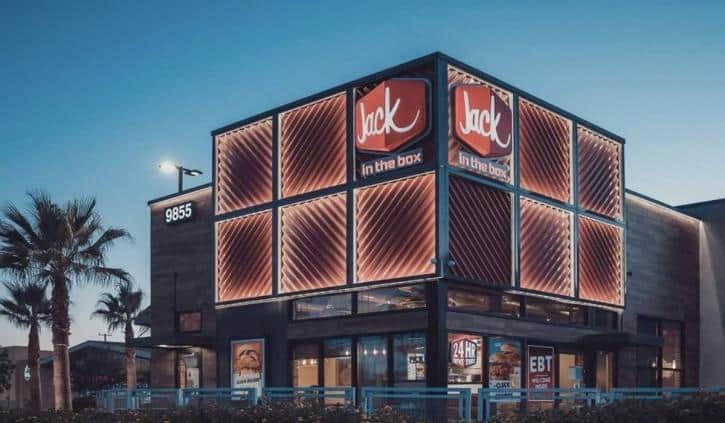
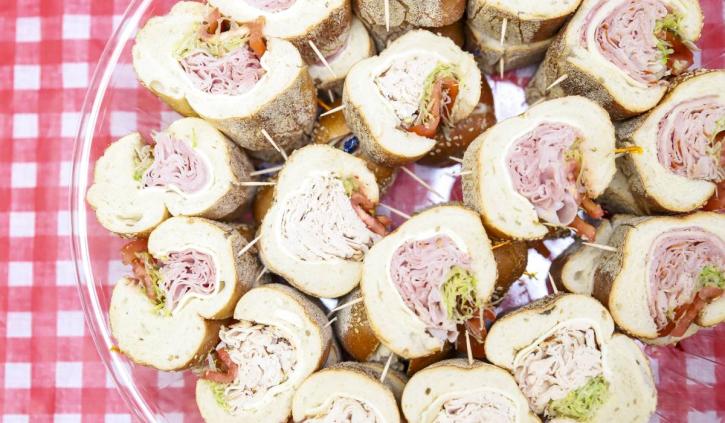
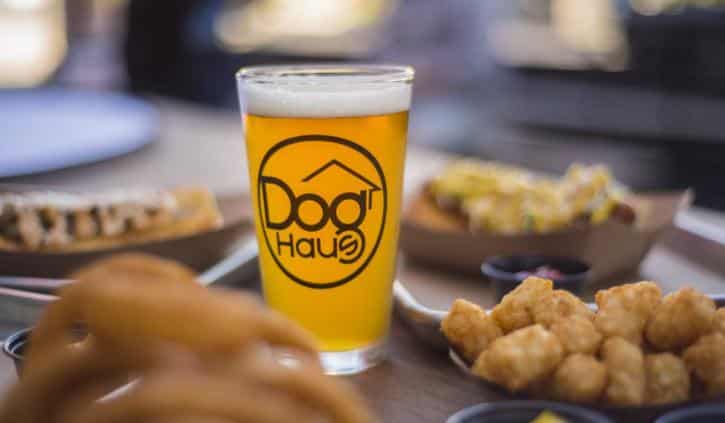
This year’s Best Franchise Deals is the 12th in QSR magazine’s history. For 2022, we reconnected with our Franchise Council of industry experts to get their insight and picks.
They were: Graham Chapman, EVP of account services, 919 Marketing; Stan Friedman president, FRM Solutions; Alex Oswiecinski co-founder and CEO, Prospect Direct; and Robin Gagnon, CEO and co-founder, We Sell Restaurants.
MORE: Restaurant Franchising After COVID: A Story of Resiliency and Rebound
The theme of this year’s bunch wasn’t solely tied to pandemic resiliency and how these chains navigated the worst COVID threw at them; it’s as much as view into the future. These brands are primed to capitalize on a more demanding consumer and an industry rife with tech solutions.
Here are the 14 Best Franchise Deals for 2022 (in no particular order).
View Past Reports
2021 // 2020 // 2019 // 2018 // 2017 // 2016 // 2015 // 2014 // 2013 // 2012 // 2011
Note: If viewing on desktop, please click the arrow in the photo to continue. QSR magazine’s Best Franchise Deals for 2022 were selected from a nomination process that ran from mid-May to mid-June. Finalists were reviewed by the Franchise Council, which selected their top choices from shared information and FDD data. Their top choices comprise the final list. Brands cannot appear on Best Franchise Deals for back-to-back years, but can return after a year off.
Zaxby’s
Number of U.S. franchise units: 765
Number of U.S. total units: 911
Total systemwide sales: $2 billion
Franchise average-unit volume: $2,544,354
Franchise fee: $35,000
Royalty: 6 percent of gross sales
Renewal fee: 50 percent of the current franchise fee
Marketing fee: 4 percent of gross sales
Total startup costs: $501,700–$950,200
Franchisee incentives: Veteran discount: 20 percent on initial franchise fee
Sizing up from the sidelines:
“The numbers speak for themselves, franchise AUVs at $2.5 million, with start-up costs beginning at $502,000 make for a great ratio that puts them at the top of potential ROI opportunities in food. Strong year-over-year growth, a seasoned leadership team, and solid brand name recognition makes Zaxby’s a strong best franchise deal contender.”
“Strategic investment from Goldman Sachs is a game changer. Servant leadership mentality permeates all levels of the organization and offers franchisees a distinct/critical hiring and retention advantage—$2.5 million AUV and year-over-year growth numbers speak for themselves.”
“Zaxby’s AUV comes in at $2.5 million per store on a price tag to build of between $501,700 and $950,200. Assuming standard profitability, that is one of the best returns on capital invested among the contenders. With just 765 units nationwide, there is still room for development so the brand is ripe for continued growth without oversaturation.”
The skinny:
Zaxby’s headed toward 2023 with fresh leadership and no shortage of runway, as the Council cited. Also, powerful backing after selling a “significant” stake to Goldman Sachs in fall 2020. Headed into the deal, Zaxby’s grew the franchise side of its business by 77 locations over a three-year stretch. And the company’s average licensee ran just three locations.
Today, the brand is helmed by Bernard Acoca, the former leader of El Pollo Loco. He became only the second CEO in Zaxby’s history when he stepped in for founder Zach McLeroy last year. McLeroy, who created the brand in 1990 with Tony Townley in Statesboro, Georgia, transitioned to chairman. In April, Zaxby’s added Sharlene Smith, who previously served as VP of operations for Papa Johns’ North America sector, as COO. A month later, 20-year Zaxby’s vet Michelle Morgan was elevated to the company’s first chief people officer. But this was hardly the last move. Mike Mettler arrived as chief development officer in May after a four-year run at Orangetheory Fitness (he previously worked for Dairy Queen and Domino’s). In the same announcement, former interim chief digital and technology officer Mike Nettles, who clocked time at Panera Bread and Papa Johns, moved into the position long term. Then, Patrick Schwing, formerly Arby’s CMO, came on as chief marketing and strategy officer in June.
To put it plainly, Zaxby’s is gearing up.
Smoothie King
Number of U.S. franchise units: 995
Number of U.S. total units: 1,051
Total system-wide sales: $602,044,735
Franchise average-unit volume: $609,753
Total average-unit volume: $608,723
Franchise fee: $30,000
Royalty: 6% of monthly gross sales
Renewal fee: Currently, half of the current initial franchise fee; and $775 renewal upgrade design fee (non-refundable)
Marketing fee: National: Currently 3 percent of gross sales; with the right to increase the fee to 5 percent of gross sales upon 60 days’ notice
Total start-up costs: $320,301–$585,465
Sizing up from the sidelines:
“Smoothie King opened more than 100 units in 2021 and turned in 25 percent growth in sales and 17 percent increases in AUV, with their store average-unit volume reaching $609,753. Perhaps more importantly, the nearly 50-year-old brand made real strides in technology. One of the few brands to charge a technology fee in their FDD, they have developed supply chain technology to fuel a fresh products brand, launched an innovated smoothie subscription service and are planning to implement artificial intelligence technology for their drive-through. They earned a space as one of the Best Franchise Deals for 2022 and their growth and technology adoption bears watching.”
The skinny:
After a year that included north of 100 openings, Smoothie King signed development agreements to debut nearly 100 more already this year. This includes growth markets in the Carolinas, Florida, New York, Ohio, Texas, and Wisconsin. Of late, the brand launched a healthy rewards loyalty program designed to reward customers for living a healthy and active lifestyle. Users have the ability to earn and redeem rewards and receive exclusive offers and online exclusives. Additionally, using a GPS platform, Smoothie King can reward loyalty members when they work out at the gym.
The brand’s menu innovation remains at the top of franchisees’ selling points. Menu categories are arranged by purpose, so guests select smoothies based on personal health and wellness goals. There’s a commitment to plant-based and vegan choices as well, with a sizable scope of ingredient add-ins for customization. This year, the company unveiled a new business model with its smoothie subscription program, “Nourish Daily,” which the company said this will provide incremental revenue to franchisees.
To the Council’s point, the numbers are difficult to ignore: AUVs lifted 17 percent to $609,753, with the top 25 percent of units reporting over $907,000.
Rusty Taco
Number of U.S. franchise units: 32
Number of U.S. total units: 36
Total system-wide sales: $35,554,880
Franchise average-unit volume: $1,099,722
Total average-unit volume: $1,099,722
Franchise fee: 25,000
Royalty: 5 percent of gross sales
Renewal fee: 50 percent of then-current initial franchise fee
Marketing fee: If established, the amount Rusty Taco specifies, subject to the Marketing Spending Requirement.
Total start-up costs: $531,900 to $897,450
Franchisee incentives:
VetFran Program: The “VetFran Program” is designed to provide career opportunities for honorably discharged military veterans or wounded warriors. It applies if you are a veteran or returning service member (who has not previously signed, or had an affiliate that signed, a development agreement or franchise agreement with the brand) who qualifies. The discount is 50 percent off the initial franchise fee for each franchise agreement. Rusty Taco applies
the prorated discount for each Franchise Agreement toward the development fee payable under your development agreement.
Prospective franchisees may qualify for both the VetFran Program and the standard adopter incentive program.
Standard Adopter Incentive Program: Notwithstanding the first sentence of Section 4.2 of the Franchise Agreement, if you open the restaurant in compliance with the terms of the franchise agreement (including, but not limited to, Section 3.1 (site selection and on-site evaluation) Section 3.2 (franchise site application), Section 3.3 (Lease of Building), Section 3.4 (Restaurant Designed and Build-Out), Section 3.5 (Opening), Section 6.5 (Purchase Requirements), Section 6.6 (Purchases from Designated Sources), and Section 6.7 (Franchised Location; Vehicles), then the royalty fee will be amended as set forth below:
Time period
First 12 months of operation
Months 13–24 of operation
Months 25–36 of operation
Remaining term of franchise agreement
Notwithstanding the foregoing, if you open the restaurant in compliance with the terms of the Franchise agreement at least three months before the opening date, then the royalty will be zero percent of gross sales accrued for the first six months that the restaurant is open for business, and the royalty rates described in the table above will apply beginning six months after the restaurant’s actual opening date.
2022 Pull Forward Incentive: If Rusty Taco and you have already signed a pre-existing development agreement, or if the company and you sign a new development agreement, with a development schedule that requires you to open a restaurant in 2023 or later, and you sign a franchise agreement for and open that restaurant in compliance with the franchise agreement and development agreement on or before December 31, 2022, and you submit development costs to the company within 120 days of opening the restaurant and build the restaurant in the design, to the specifications, and at the location approved, then the royalty fee will be zero percent of gross sales accrued during the first year (12 months) that the restaurant operates; 2 percent of gross sales accrued during the second year (13–24 months) that the restaurant operates; 4 percent of gross sales accrued during the third year (25–36 months) that the restaurant operates; and 5 percent of the restaurant’s gross sales accrued during the remainder of the initial term of the franchise agreement. If you fail to open the restaurant in compliance with the franchise agreement and/or development agreement (if applicable) on or before December 31, 2022, fail to submit the development costs to us within 120 days of opening the restaurant, or fail to build the restaurant in the design, to the specifications, and at the location approved, you will not qualify for the 2022 Pull Forward Incentive and your royalty fee with be 5 percent of gross sales for the term of the franchise agreement.
Sizing up from the sidelines:
“Backed with more resources after being acquired by Inspire Brands, it’s hard to bet against this 36-unit brand becoming much bigger in coming years. With most markets open, and no end in sight to the taco-trend, franchisees have the opportunity to both pick prime territories and ride the rising tide of consumer preference and increased brand recognition.”
“I love this brand and its brand story. I also like the simplicity of the concept, ‘nothing fancy, just real flavor and cheap, too.’ While this brand hasn’t got the cache in its name that more mature brands enjoy, it does have the full strength of Inspire Brands behind it.
That means the same economies of scale afforded to franchisees of brands such as Arby’s, Buffalo Wild Wings, Sonic, Jimmy John’s, Baskin-Robbins, and Dunkin’, will be found here. Also, Inspire offers some very powerful incentives to franchisees signing development agreements for store openings over the next 36 months.”
The skinny:
Founded in 2010 by Rusty Fenton and his wife, Denise, Rusty Taco merges the flavors and experience of a traditional taco stand with flexible prototype designs. The Inspire Brands-backed chain (Dunkin’, Sonic, Buffalo Wild Wings, Baskin-Robbins, Arby’s, and Jimmy John’s) has 36 locations across multiple states, with its newest store opening earlier this year in San Antonio.
Unlike some other taco chains, Rusty Taco appreciates three strong dayparts, with a high percentage of sales coming in the morning thanks to an array of breakfast tacos. All tacos can also be ordered as rice bowls or salads, which helps spread occasions. To capitalize on recent trends, it also unveiled an elevated prototype complete with an on-site bar. The layout provides further dining and seating options. Other adaptations include mobile ordering and pickup through its app, website, and third-party. As the Council mentioned, Rusty Taco is a rare up-and-comer with the support of one of the country’s largest conglomerates. The company notes franchisees can invest in a new, emerging chain with ample whitespace, yet do so with the “comfort and security” of Inspire Brands’ engine. That includes shared services like development, supply chain, and marketing support. Multiple franchise agreements were signed in 2021, which will lead to growth throughout Utah, Nevada, Virginia, and Texas. Several new operators are already a part of the Inspire family.
Tim Hortons
Number of U.S. franchise units: 637
Number of U.S. total units: 637
Total system-wide sales: $687,500,000
Franchise average-unit volume: $1,200,000
Total average-unit volume: $1,200,000
Franchise fee: $50,000
Royalty: 6 percent of sales
Renewal fee: $50,000
Marketing fee: 4 percent of sales
Total start-up costs: $246,500–$2,162,500
Sizing up from the sidelines:
“Way ahead of the curve with a prime-time influencer/spokesperson relationship with Justin Bieber (will help the Canada to U.S. push in a big way). Third-largest coffee chain with serious name recognition. As other coffee chains battle territory restrictions (due to growth which highlights the ongoing upside of the coffee space), Tim Hortons is positioned well to capitalize.”
The skinny:
As the Council suggests, one thing Tim Hortons doesn’t lack is name value. Parent company Restaurant Brands International CEO José Cil recently noted 80 percent of Canadians visit the brand every month. And the chain’s cult-favorite status? “It’s not a cult if everybody likes it, right?” Cil told QSR. “… It’s as Canadian as the maple leaf and hockey.” While there’s no denying the brand’s hold in Canada (there are more than 3,900 locations), there remains plenty of growth opportunity stateside. At fewer than 640 stores, the U.S. map is wide open to Tim Hortons. This expansion will come with next-generation designs as well, which the company unveiled in early June. One is a 900-square-foot drive-thru-only model built to maximize efficiency and speed of service. The prototype is integrated with Tim Hortons’ app, meaning guests can easily order ahead, collect rewards points, and access weekly exclusive offers. The new store also features mobile order parking spots. The other prototype is a 1,600-square-foot restaurant with 24 seats inside. As part of both designs, the menu is simpler, but with new items like refreshers and energy drinks, alongside mainstays such as Iced Capps, doughnuts, Timbits, breakfast sandwiches, and Original Blend and Dark Roast coffee.
More than 10 new model stores with a dining room have been built since 2020, and another 20-plus will debut before the end of 2022, the company says. Overall, the chain’s density in the U.S. is beginning to expand beyond its heavy presence in the Northeast and Upper Midwest. The brand recently signed a 30-unit deal for Houston and a 15-unit agreement in Atlanta.
The Human Bean
Number of U.S. franchise units: 124
Number of U.S. total units: 137
Total system-wide sales: $108,883,844.34
Franchise average-unit volume: $915,668
Total average-unit volume: $916,432
Franchise fee: $30,000.00
Royalty: None
Renewal fee: $2,000
Marketing fee: 1 percent
Total start-up costs: $386,350–$908,770
Sizing up from the sidelines:
“A unique model in several ways makes the brand differentiated to both franchisees and consumers. Having no royalties, while being transparent that brand revenue is generated through from coffee and supplies, potentially gives franchisees more margin control. Ability to setup drive-thru locations in unique spots with a small footprint and minimal staffing is appealing in the current market.”
“The Human Bean is largely a western chain, working its way east, offering drive-thru espresso and coffee beverages. The company proudly sources its own coffee, with long-term relationships with coffee farmers, and encourages them to adopt sustainable growing methods. The company does not charge franchisees any ongoing percentage-of-sales royalty or marketing fees, earning its revenues instead from the sale of coffee and supplies to franchisees.
In business since 1998 and franchising since 2002, the number of locations has risen over the past 10 years from 47 in 2011 to the current total of 121 (up from the previously reported total of 105) 13 are company-owned and all are located in the U.S.”
The skinny:
The separator for drive-thru coffee franchise The Human Bean is the aforementioned fact it doesn’t charge a percentage-of-sales royalty. The brand’s revenues stem from bulk sales of coffee and other supplies ordered from its franchised locations. “The Human Bean realizes that as independent business owners, franchisees should be able to enjoy the many fruits of their labor while receiving the benefits of being part of The Human Bean franchise,” the company says. “Our goal is for Human Bean franchisees to enjoy the returns from their investment while receiving the benefits of being part of The Human Bean franchise.”
The Human Bean serves a chocolate-covered espresso bean on top of every drink, and has earned a fervent following in its regional base. It supports four local giveback programs including, Coffee for a Cure, Mochas for Men, Food Drives, and Earth Day. “We are focused on human beans taking care of human beans,” the brand says.
The Human Bean started in 1998 as a drive-thru espresso stand in Ashland, Oregon, and claims to have more than 300 stores open or under development in 25 states today.
Chicken Salad Chick
Number of U.S. franchise units: 150
Number of U.S. total units: 205
Total system-wide sales: $255,000,000
Franchise average-unit volume: $1,293,304
Total average-unit volume: $1,404,812 (company owned)
Franchise fee: $50,000
Royalty: 5 percent gross sales
Renewal fee: $3,500
Marketing fee: $10,000 (for grand opening)
Total start-up costs: $742,300–$980,300
Franchisee incentives: Chicken Salad Chick has relationships with third-party sources which offer financing to those who qualify to cover the following: franchise fee, startup costs, equipment, inventory, accounts receivable, payroll. Chicken Salad Chick also provides a turn-key grand opening program with marketing and media planning for each restaurant, utilizing the $10,000 fee to support those efforts.
Sizing up from the sidelines:
“Chicken Salad Chick turns in a star performance with an AUV of $1.3 million with a cost to build of less than a million. Sales in 2021 increased by 46 percent, showing that this brand’s growth is off the charts. They also benefit from a differentiated concept. They have no real rival in the chicken salad space despite many contenders in the fried chicken categories.”
“A brand that has authentic appeal—founder story, southern recipes, niche offering, etc. Feels like a good fit for a large demographic of health conscious and on-the-go professionals and parents. Strong AUV’s and consistent growth, with room for more potential openings nationwide.”
The skinny:
The Council’s note about differentiation remains core to Chicken Salad Chick’s potential. While the chicken category might be packed to the edges in quick service, the chicken salad one is a different story. In 2021, the brand opened 30 new stores, resulting in a 17 percent bump in unit count, year-over-year. This included market debuts with multiple stores in Indianapolis, Western Virginia, and South Florida. It also inked franchise agreements with new and existing operators to develop 32 additional locations over the next several years. This will be part of Chicken Salad Chick’s plan to open more than 50 restaurants in 2022. Meanwhile, systemwide sales soared to $255 million, which is 46 percent higher than 2020. In the second half of the year alone, the company says, it outpaced the industry’s average monthly sales growth by more than 14 percentage points. And innovation has run alongside growth. The company rolled out third-party delivery this past year through Uber Eats and DoorDash integrated with its online ordering partner (Olo/Rails), which grew to more than 7 percent of total monthly system sales by the end of December 2021. Chicken Salad Chick introduced branded box lunch catering options, or individualized portions of chicken salad meals, and they comprised over 75 percent of the chain’s catering product mix, resulting a double-digit catering bump over 2019. The brand reported its highest sales days yet on Mother’s Day, Veteran’s Day, and Guest Appreciation Day.
Also, Chicken Salad Chicken grew its Annual Giving Card program, which raises money for the CSC Foundation to support childhood cancer and feeding the hungry. The donation amount for 2021 was 50 percent higher than the previous year.
McAlister’s Deli
Number of U.S. franchise units: 472
Number of U.S. total units: 505
Total system-wide sales: $869,957,198
Franchise average-unit volume: $1,865,861
Total average-unit volume: $1,865,861
Franchise fee: Traditional restaurant, $35,500; Express restaurant, $15,500.
Royalty: 5 percent of net sales
Renewal fee: 20 percent of the then-current initial franchise fee.
Marketing fee: 2 percent of net sales for restaurants that are transferred: the percentage of net sales paid by the transferor at the time of the transfer (currently, either 1.75 or 2 percent of net sales, but expected to increase to 2 percent of net sales by the end of 2022).
Total start-up costs: Traditional restaurant at an endcap or inline shopping center location $821,000–$1,308,850; traditional restaurant at a newly constructed freestanding location $1,382,550–$2,187,450; express restaurant $393,500–$636,200.
Franchisee incentives: International Franchise Association’s VetFran program. For qualifying veterans or members of the Armed Forces, the Initial Franchise Fee is $20,000.
Sizing up from the sidelines:
“With an AUV of $1.8 Million in the U.S., McAlister’s Deli has actively embraced digital technology to improve the customer experience with nine different ways that customers can engage with the brand in person or digitally. The brand is on track to be the first billion-dollar brand in the Focus Brands’ portfolio and just opened its 500th restaurant. With strong unit sales and costs to build an endcap at $1.3 million, this brand will pay off as one of the Best Franchise Deals for 2022.”
“Recently underwent its most significant evolution of the brand since its birth in the late 1980s. Significant and steady growth through the years … Thirty-three of the 505 units are company owned and all are located in the U.S. Recent accelerated growth also fueled by the prioritization of investment on of enhanced customer experience. This evidenced by major improvements to its mobile app, loyalty program, and tableside ordering. Average EBITDA of at least $100,000 on average revenues of at least $1 million.”
The skinny:
Founded in 1989, the Focus Brands chain has enjoyed a modern evolution of late. The main target: prioritization of the dining experience across multiple touchpoints. For instance, McAlister’s poured resources into its mobile app and loyalty offerings, and also launched tableside ordering in early 2021. Now, guests can sit down at a table, pull out their mobile device, and skip the line. True to its classic model, employees still run the food out to the table. McAlister’s currently boasts nine different ways for customers to engage with the brand, whether in-person or digitally. And its loyalty program eclipsed a million users last year.
On the development front, McAlister’s announced the grand opening of its 500th sore in October 2021 (Dickson, Tennessee). Across the year, it opened 30 new locations, signed 67 agreements, and, to the Council’s proclamation, is on track to become Focus’ first billion-dollar brand by 2024.
Wing Zone
Number of U.S. franchise units: 31
Number of U.S. total units: 32
Total system-wide sales: $34,000,000
Franchise average-unit volume: $1,001,000
Total average-unit volume: $1,001,000
Franchise fee: $30,000-40-000
Royalty: 6–7 percent
Renewal fee: $10,000
Marketing fee: 3 percent
Total start-up costs: $450,000–$500,000
Franchisee incentives: Multi-unit (three or more) development franchise fee discount of $10,000 per unit; 15 percent veteran’s discount
Sizing up from the sidelines:
“Another brand built for the post-COVID world that predates that need by a great many years. Today, Wing Zone has an average sales-to-investment ratio of at least 2:1. Highly skilled restaurant management team. Major investments in technology, operating efficiencies, small footprint, with a streamlined menu that puts the focus on its best-selling wings and tenders to in-shop curated music and a revolutionary scent strategy. Wing Zone has transformed the way customers experience the brand. Trimmed down cook times, cubbies designed for quick, grab-and-go pickup and delivery options, the fast-casual brand offers an efficient, modern take on chicken wing consumption.”
“While only 31 units strong, Wing Zone fits a quick-service model poised for success with high AUV of more than a million on a low-price tag to build. The small footprint will make real estate metrics more desirable and their embrace of technology ranging from robotics on the operations side and innovation on the delivery side makes this brand one to watch.”
The skinny:
Wing Zone made headlines in May when it announced a partnership with Miso Robotics to make “Flippy 2” a part of its standard build for all future locations. It claimed to be the first fast casual to spec food robotics into its operations at this level. The partnership arrived in parallel with the company’s recently announced Wing Zone Labs—a franchisee that plans to support the chain’s overall corporate innovation efforts. Wing Zone Labs will deploy Flippy at its 20 forthcoming Southern California locations to handle the frying station for chicken wings and other items.
Wing Zone, created in 1993, was acquired by Capriotti’s Sandwich Shop in early 2021. And growth has followed. In Q1 of this year, the combined entities signed deals for 42 shops. A new store design—Wing Zone 2.0—arrived earlier in the year as well. Wing Zone bolstered support with a new VP of operations, three franchise business coaches, two new members of its real estate management team, and appointments to senior director of training and quality assurance. For all of 2021, Wing Zone signed agreements for 91 shops. The chain announced its forthcoming flagship in North Las Vegas in late June. Wing Zone plans to open several locations in the Las Vegas metropolitan area in 2022 and touts more than 100 commitments nationwide.
Fatburger
Number of U.S. franchise units: 102
Number of U.S. total units: 102
Total system-wide sales: $139,200,000
Franchise average-unit volume: $1,051,353
Total average-unit volume: $1,051,353
Franchise fee: $50,000
Royalty: 6 percent
Renewal fee: 40 percent of franchise fee, $20,000
Marketing fee: 2 percent
Total start-up costs: $504,600–$1,522,800
Sizing up from the sidelines:
“Fast comfort food at an affordable price from a brand with a history back to the 1950s will have a consumer base in any economy. Well-served by keeping the menu simple, yet taking a cue from sister brand Hurricane Grill to add popular wings as a menu option [as Yum! did with Pizza Hut and WingStreet] may be a good play. Franchisees have the opportunity to own other FAT Brands as a portfolio play to lock down more favorable real estate and anchor locations.”
The skinny:
Fatburger franchisees have the ability bump revenue streams via co-branding with Buffalo’s Express. They can also opt to have a virtual wing chain with another concept in FAT Brands’ portfolio, Hurricane Grill & Wings. It gives operators flexibility to increase menu mix at a minimal cost, with the brand operating out of the back of the house.
Also, to the Council’s note, FAT Brands’ fast-scaling and diverse portfolio create whitespace for owners to fill multiple voids within markets. Franchisees don’t have to start with a single brand or location—they can come into the system and choose multiple options, the company says. In terms of how that breaks down, FAT Brands spent nearly $900 million across five months in 2021 to spread its base to 17 concepts at the time, 2,300 franchised and company-run units, and systemwide sales of roughly $2.3 billion. It operated in 40 countries and 48 states with a group of 900 franchisees, half of which are multi-unit operators.
Earlier in the year, FAT Brands said it had a pipeline of roughly 800 restaurants set to open in the next four or five calendars. This includes all corners of the industry, from Johnny Rockets to Fazoli’s, Native Grill & Wings, Twin Peaks, and Round Table Pizza (among others).
In May, FAT Brands announced its latest deal, bringing Nestlé Toll House Café by Chip into the fold for an undisclosed figure. Arguably the bigger point, however, was FAT Brands’ move to rebrand stores to Great American Cookies, which would tack about 85 stores onto a 370-unit dessert chain.
FAT Brands acquired Great American Cookies, along with Round Table Pizza, Marble Slab Creamery, Pretzelmaker, and Hot Dog on a Stick in summer 2021 for $442.5 million when it purchased Global Franchise Group.
SoBol
Number of U.S. franchise units: 55
Number of U.S. total units: 57
Total system-wide sales: $28,776,728.06
Franchise average-unit volume: $571,932
Total average-unit volume: $504,854.88
Franchise fee: $30,000
Royalty: 5 percent
Renewal fee: $7,500
Marketing fee: Minimum $500
Total start-up costs: $240,800–$450,600
Sizing up from the sidelines:
“Like Zaxby’s, commitment to cultural values is a huge plus. Phenomenal emerging brand that’s eclipsed 50 locations largely because of the industry leading product—Grade A açaí made fresh in store every day and homemade granola that truly is the secret sauce.”
The skinny:
The granola referenced by the Council can’t be overstated. It’s only available for purchase at SoBol locations. Founder Jason Mazzarone hails from a culinary school background and came up with the idea for the brand after visiting an açaí bowl stand after surfing in San Diego. The chain has relied on a franchise-heavy model since 2016. It’s supported the effort with franchising development managers, operations specialists, marketing managers, and others. Last year, Mazzarone, who grew up around his family’s business, an Italian ice shack founded by his grandfather (where he first began selling the purple bowls), said 2022 was shaping up to be the company’s largest development run yet, with plans to open nearly 20 more venues. The simple menu helps cut back waste and improve profitability.
Sonic Drive-In
Number of U.S. franchise units: 3,232
Number of U.S. total units: 3,534
Total system-wide sales: $5,835,448,575
Franchise average-unit volume: $1,708,000
Total average-unit volume: $1,681,000
Franchise fee: $45,000
Royalty: 5 percent
Renewal fee: 20 percent of then current license fee (currently would be $9,000 for traditional Drive-Ins and $450/year of term for non-traditional restaurants)
Marketing fee: 3.25 percent (minimum) of gross sales traditional and 1.85 percent non-traditional
Total start-up costs: $1,768,000–$3,543,000
Franchisee incentives: New and developing markets incentive. The NDM Incentive is designed to introduce and increase the presence of the Sonic brand in certain markets that we designate as new or developing markets. If you qualify and wish to participate in the NDM Incentive, you must sign a development agreement to develop one or more Sonic Restaurants on or before March 31, 2023. Under the NDM Incentive, you will pay the full initial license fee when you sign the license agreement, but we will credit $30,000 from the initial license fee you paid toward the royalties owed under that license agreement, provided you submit development costs to us within 120 days of opening the restaurant, and build the restaurant in the design, to the specifications, and at the location we approve. Under the NDM Incentive, Sonic may reduce your royalty fee based on when your restaurant opens as described in Item 6.
Core markets incentive: The CM Incentive is designed to continue growing the presence of the Sonic brand in certain markets that we designate as core markets. If you qualify and wish to participate in the CM Incentive, you must sign a development agreement to develop one or more Sonic Restaurants on or before March 31, 2023. Under the CM Incentive, you will pay the full initial license fee when you sign the license agreement, but Sonic will credit $30,000 from the initial license fee you paid toward the royalties owed under that license agreement, provided you submit development costs to us within 120 days of opening the restaurant, and build the restaurant in the design, to the specifications, and at the location we approve. Under the CM Incentive, Sonic may reduce your royalty fee based on when your restaurant opens as described in Item 6.
2022 pull-forward strategic incentive. If Sonic and you already signed a pre-existing development agreement with a development schedule that requires you to open a restaurant in 2023 or later, and you sign a license agreement for and open that restaurant on or before December 31, 2022, or if you the development schedule requires you to open a restaurant in 2024 or later and you sign a license agreement for and open that restaurant on or before December 31, 2023, then you are eligible for our “2022 Pull-Forward Strategic Incentive” program. Under this program Sonic will credit $30,000 from the initial license fee you paid towards the royalties owed under that license agreement, provided you submit development costs to Sonic within 120 days of opening the restaurant, and build the restaurant in the design, to the specifications, and at the location Sonic approves. As described in Item 6, you also will pay reduced royalties based on when your restaurant opens.
Sizing up from the sidelines:
“For a brand with such rich history, Sonic is one of those restaurants built for the post-COVID world. Diverse offerings in both traditional and non-traditional models. Average EBITDA of at least $100,000 on average revenues of at least $1 million. Part of the Inspire Brands family of brands, some very rich incentives are being offered by Inspire, for all stores opened between now and 2025.”
The skinny:
Without much debate (see Council comment), Sonic was uniquely positioned to thrive over the last couple of years. Simply, the brand’s classic pull-up/drive-thru model met the contactless need of customers across the country. As “car picnics” became cool again, Sonic was already embedded. And it’s played into those strengths of late with guest-centric marketing campaigns and continued tech innovation (the ability to tip carhops) that’s worked to strengthen convenience and remove friction across multiple channels. Of Inspire’s fleet of brands, Sonic reported the highest two-year same-store sales jump last year at 25.8 percent. The chain’s five distinct dayparts are now being served across one of the industry’s most flexible footprints, too. This includes the “Delight” prototype, which features docks for parked cars and a drive-thru, as well as a covered, string-lit outdoor patio complete with lawn games. Sonic’s mobile order-ahead capabilities and rewards program allows consumers to control their experience in a way few chains can rival. It’s helped alleviate drive-thru capacity as Sonic, essentially, boasts a built-in curbside footprint that guests have been using for decades. Like Rusty Taco, Sonic franchisees also have access to the full breadth of Inspire’s collective resources.
Jack in the Box
Number of U.S. franchise units: 2,055
Number of U.S. total units: 2,218
Total system-wide sales: $4,077,467
Franchise average unit volume: $1,800,191
Total average unit volume: $1,858,441
Franchise fee: $50,000
Royalty: 5 percent
Marketing fee: 5 percent
Total start-up costs: $1,697,000–$2,694,600
Franchisee incentives: Under current development incentive for new franchisees, executing at least a three-unit development agreement, the royalty (which is currently 5 percent of gross sales) will be reduced to 1 percent of gross sales for the first year, 2 percent of gross sales for the second year, 3 percent of gross sales for the fourth year, and 5 percent for all subsequent years.
For existing franchisees (operating as of March 23, 2021) who sign a multi-unit development agreement before October 1, 2023, the brand offers the following incentives: Zero percent royalty for years one to three, 2 percent of gross sales for Year 4, 3 percent of gross sales for year 5, 4 percent of gross sales for Year 6; and 5 percent for all subsequent years.
Sizing up from the sidelines:
“The new multi-unit development agreement incentives are very enticing. Beyond that, the recent acquisition of Del Taco gives current/future excellent co-brand and portfolio diversification options at a fraction of the typical cost. Experienced/high character corporate/development team also a huge plus.”
The skinny:
Jack in the Box’s incentive program is intended to drive dynamic growth, the company says, as it reduces royalties to help franchisees during formative years. Expansion is picking up. In Q1, the classic chain reported more than two dozen multi-unit deals, which added 98 commitments to its pipeline. The chain last quarter said it’s signed 53 development agreements for 218 restaurants since launching a revitalized franchise program the previous summer—the highest number of commitments in its 71-year history. AUVs recently topped $1.8 million for the first time as well.
Jack in the Box’s reimage program, which officially launched in Q2, has rolled forward. As of May, 12 corporate units were already in the design and permitting phase, and 136 franchise restaurants were approved. In Yuma, Arizona, the parking lot doubled in size to accommodate a double drive-thru and fully remodeled dining area. In the first month, the location saw a 25 percent lift in same-store sales and exceeded $100,000 in sales per week, driven mostly by transactions. To put it into context, that equates to an annualized AUV of more than $5 million. The chain is providing capital incentives to encourage operators to join the remodeling program.
Jack in the Box, as mentioned, acquired Del Taco in March for $585 million. Currently, roughly 49 percent of Del Taco’s footprint is company-owned, but Jack in the Box is finalizing a go-to-market plan to refranchise a majority of those units.
PrimoHoagies
Number of U.S. franchise units: 86
Number of U.S. total units: 87
Total system-wide sales: $80,000,000-plus (2022 projection)
Franchise average-unit volume: $854,000
Total average-unit volume: $854,000
Franchise fee: $15,000
Royalty: 6 percent
Renewal fee: $5,000
Marketing fee: 2.5 percent
Total start-up costs: $246,000–$612,000
Franchisee incentives: 10 percent veteran discount and multi-unit operators reduced franchise fees
Sizing up from the sidelines:
“Family values with huge upside—the 80-plus unit chain expects to eclipse $80 million in 2022 systemwide sales. Also, it’s not just your run-of-the-mill sub shop. Each PrimoHoagies location serves up old school Italian classic sandwiches on top of award-winning seeded bread. In a crowded category, the quality of the sandwiches, especially that bread, stands out.”
The skinny:
PrimoHoagies closed 2021 with 19 new franchise agreements, including the chain’s Texas debut (eight signed in the Lone Star state alone). Otherwise, PrimoHoagies expects to continue expanding in Colorado (five locations), in addition to five new franchises in North Jersey and one in suburban Philadelphia. The signed agreements brought the total number of new secured locations to 61 in 2021.
PrimoHoagies is hardly a newcomer. The 30th anniversary of its original South Philadelphia location arrived over the summer. With current locations operating in Delaware, Florida, Maryland, New Jersey, North Carolina, Pennsylvania, and South Carolina, the past two years brought fresh waves of development that should carry the chain into the triple-digit club in short order. The menu features a wide variety of cold and hot hoagies, cheesesteaks, wraps, vegetarian options, sides, and more. Catering is also available for special events, holidays, gamedays, and corporate luncheons.
Dog Haus
Number of U.S. franchise units: 49
Number of U.S. total units: 51
Total systemwide sales: $67,311,196
Franchise average-unit volume: $1,653,026.58
Franchise fee: $40,000
Royalty: 6 percent
Renewal fee: $10,000
Marketing fee: 2 percent
Total startup costs: $377,000–$968,100
Sizing up from the sidelines:
“The ghost kitchen and virtual space has flooded with opportunistic players over the course of COVID. But few chains boast the equity and experience of Dog Haus for prospective operators hoping to cash in. Beyond being early adopters, there’s a clear commitment to supporting the model and to putting their name behind it—the virtual brands say ‘powered by Dog Haus.’ Low startup costs and agility, with sizable AUVs and tech systems, offers a great buy for an operator looking to be on the cutting edge of a fast casual with a lot of whitespace.”
The skinny:
When operators sign up with Dog Haus, they can franchise multiple brands—all for the same franchise fee. This means multiple platforms and revenue streams out of a single restaurant and the same inventory. Dog Haus was one of the first franchises to take the delivery-only route when it partnered with Kitchen United in 2019. That world has only expanded. As the brand touts, its approach to virtual brands throughout COVID and into the future hasn’t been to complicate the back-of-the-house with products and menus that don’t fit its approach. Rather, Dog Haus continues to develop brands that accentuate what it already offers, just packed in platforms that customers can quickly identify. For instance, Bad Mutha Clucka for chicken and Bad-Ass Breakfast Burritos (for burritos, naturally), as well as Plant B, Jailbird, and Big Belly Burgers. Dog Haus runs these under the umbrella name of Absolute Brands. The flagship Dog Haus concept specializes in gourmet hot dogs, burgers, chicken, and craft beer. q





